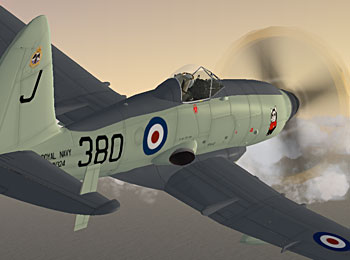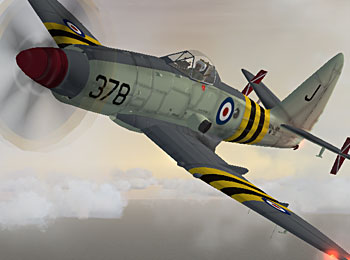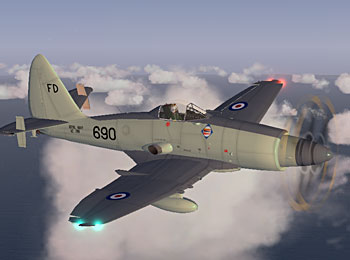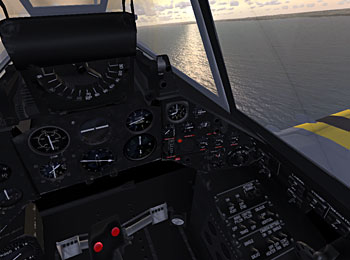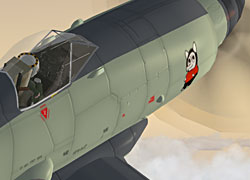
Westland Wyvern for SFP1/Wings over Israel
*NEW* - Download the model for SFP1/WoI *NEW* - Download Pilot's Notes
Based on the same model as the FSX Wyvern the Strike Fighters version is fully compatible with the October '08 patch and features historically accurate loadouts for air to ground combat. Markings are provided for 813, 830 and 831 NAS with individual serial numbers for each aircraft in the squadron based on records. As with the FSX version she's carrier compatible with landings again proving a challenge.
After a lengthy development that went through no less than 3 power plants, before finding one a manufacturer would produce in sufficient quantity, the Wyvern S.4 entered service in May 1953 with full squadron service starting in Ì54. The Wyvern is perhaps most famously remembered for its part in the 1956 Suez conflict which occurred halfway through its all too brief career.
The aircraft as modelled is in the later build state with a metal aft to the canopy, the original perspex proving insufficiently rigid, although providing a slightly better all round view. The radar warning aerials have been removed from the tail, the early equipment doing little more than alarming the pilot rather than providing an indication of a threat! Finally the wing-tip fold has been disabled, the greater hangar height of post war fleet carriers proving it unnecessary while most aircrew found it an annoyance, the tips being only a few inches above their heads when exiting the cockpit.
The flight model replicates the performance as described in the Pilot's Notes and from anecdotal accounts by service pilots. Performance of the 3,760hp Armstrong Siddeley Python allows her to reach 300kts on the deck, less than the claimed 340kts, but the most any service pilot actually saw. As in the original spool up at low power settings can take a few seconds, making carrier operations tricky again as in the original which suffered an appalling loss rate, including the world's first underwater ejection. Full operating details are provided in the accompanying Virtual Pilot's Notes.
